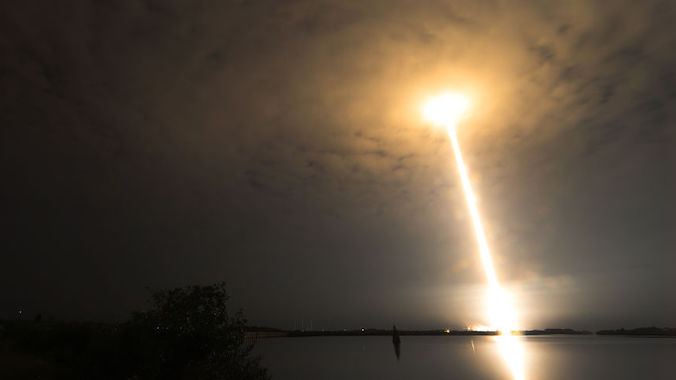Please Do Not Let Elon Musk Destroy the Ozone Layer
Photo by Red Huber/Getty Images
In 1966, as the war in Vietnam was ramping up, the Department of Defense asked for a bit of help from NASA, then less than a decade old. The new space agency was tasked with answering a simple question: how do we make the dark Vietnamese jungle nights a bit more hospitable to shooting things and blowing shit up? NASA pawned off the work on a potential solution to a small group of companies — Goodyear Aerospace, Boeing, Westinghouse, Grumman — which spent a few months in secret studying many of the technical details of, no joke, giant inflatable space mirrors.
The effort, dubbed Project ABLE, never got off the ground. By December word of the studies had gotten out, and astronomers jumped in the pages of the New York Times lamenting that giant space mirrors could “ruin the night sky forever.” The companies, though, at least seemed to see no problem with the idea: in a Goodyear Aerospace report from December 1966, the authors wrote that three months of study “resulted in a wealth of useful design information,” and offered a series of recommendations for a “continuing orbital reflector program effort.”
The story popped to mind this week when news broke about the potential consequences of letting another private company launch some questionable stuff into space: satellites that burn up upon reentering the Earth’s atmosphere can generate chemicals that help deplete the ozone layer, and Elon Musk’s Starlink satellites are increasingly dominating the air up there. They may eventually have so many that the Antarctic ozone hole, which for decades has been on the mend thanks to one of the most effective international environmental treaties ever, may have trouble fully healing.
Researchers at UCLA modeled out just how much aluminum oxide particles a 250-kilogram satellite can generate in the upper atmosphere as it disintegrates — about 30 kg worth. Those particles interact with chlorine in such a way that is known to deplete ozone. And SpaceX has been sending a lot of those suckers up there.
Of more than 8,000 non-debris objects in low-earth orbit, around 6,000 of them are Starlink satellites. The company already has permission to launch another 12,000, the researchers note, and they plan for more than 40,000; the single SpaceX launch pictured above carried 53 of them into orbit. And they don’t last very long: after five years the satellites are put out of service, and their orbit decays until they enter the ozone-murdering area. The study found that the reentry of satellites from such planned mega-constellations could yield about 360 metric tons of aluminum oxide particles each year, “which can lead to significant ozone depletion.”
Astronomers have already expressed some of the same concerns that helped scuttle Project ABLE 60 years ago, noting Starlink’s potential to brighten the night sky; their ozone effects add another wrinkle to the idea that ceding such planetary projects to for-profit companies may have its downsides. This time, though, the world is a couple of decades into an era where private companies actually have access to space, and where governments are increasingly reliant on SpaceX in particular both to shuttle their astronauts in and out of orbit and for internet access in hard-to-reach places. This new study, then, is sort of like hearing the potential issues with the space mirrors five years after they were lighting up Vietnam like a Christmas tree.
There have been few signs that the U.S. government in particular has any interest in limiting its dependence on the increasingly fascist-curious Musk. So I confess to more than a bit of tired resignation when I say: please do not let this man destroy the ozone layer.